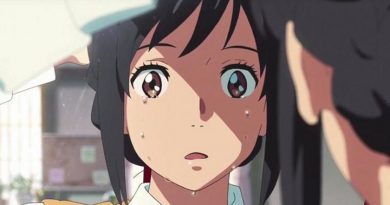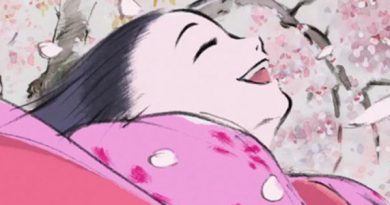When Marnie Was There: A New Book in the Ghibli Fairytale

As the Studio celebrated its 30th birthday last year it was also experiencing a huge transition. Co-founder and figurehead Hayao Miyazaki had stepped down from creating feature films. This was not an unanticipated announcement and by now is old news, however for Western fans that finally had access to the cinematic release of When Marnie Was There; the profound creative changes that accompanied the structural change have come to light and are celebrated with the home entertainment release of the film this month.
Marnie was directed by Hiromasa Yonebayashi, a Ghibli disciple since 1997, which was not particularly unusual as he made his directorial debut with The Secret World of Arrietty in 2010; another retelling of a well-loved British book. This time though, Miyazaki would not be on-hand to guide and advise him. It was a bold move not only for the Studio, but a step into the unknown for Yonebayashi himself. Neither was Isao Takahata directing. This was the first time that neither of the Studio’s co-founders would be on the credits and truly signifies a new chapter in its history.
Returning to the film itself for a moment, it’s clear to see the structure of the storytelling is more ambitious than any previous title. The mysterious nature of the realities in which Marnie and Anna inhabit make for an overlapping narrative where dreams make you question what is ‘present’ and what is imagination. Ghibli films have always crossed worlds, but they are usually spiritual boundaries, this one includes ideas of consciousness and interior mental states. It’s an exciting hybrid whereby expected themes such as Japanese countryside as a healing mechanism, childhood friendships, and love through shared adventures are included but exist inside a wider context. But the examination and plotting of a serious issue as Anna’s mental state has not been done so painstakingly in Ghibli before. Anna is seen as emotionally fragile through the struggle with her adoptive mother, asthma and social insecurity. My Neighbour Totoro may look at Satsuki’s difficult home life with her mother ill in hospital, but it didn’t have the depth seen here. It had many wonderful things, but they were not centred on confronting internal scars, if anything it demonstrates an escape from them.
There are a lot of new techniques used by Ghibli to go with the change of personnel. Yonebayashi admitted that he “was a pain for lots of departments” in asking for the level of detail to meet his vision. It may not be apparent in the cinema as you are swept away in the story but there a number of deliberate differences to the visual presentation of the film. Firstly, the idea of ‘blankness’, taken from Joan G. Robinson’s source material that Anna was “ordinary” is reflected in the change of style to her facial expressions. For more incredible detail on how this was achieved, have it explained to you by the man himself in the Extras. Another key area of change was the depiction of sky. Again, Yonebayashi looked to the book and the “pearl” nature of the sky. He took the decision to sideline the traditional blue sky with white fluffy clouds seen in The Wind Rises or Porco Rosso, to name two obvious examples. The difference made by these changes is remarkable when re-watching this. The story behind the creation of the music landscape is another fascinating demonstration of attention to detail and the talent that Ghibli draw on.
Yonebayashi was allowed to carry out his vision, even if it made more intense sketching from the Ghibli animators in an alien style. The film still feels so entirely Ghibliesque though with its warm heart, otherworldliness and central loving friendship between the two female teens. It’s hard to tell where and who will direct Ghibli from here.

It’s a good job they are shaking things up. At this year’s London Film Festival, Your Name is making waves as the first Japanese animation to compete in the Official Competition. Coincidentally, the main characters also exist in mysteriously parallel timelines. Close-Up will have more on that film closer to the UK release on 18th November, but it’s safe to say that Ghibli have some stunning competition. This will be fantastic for the Japanese animation industry – especially as more films seek to crack the Western market, following in the Totoro-shaped footprints of Ghibli.
When Marnie Was There is out on Blu-ray & DVD now,


